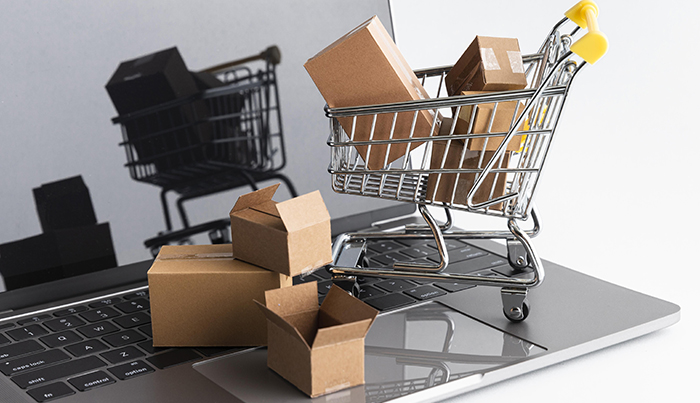Singapore – The shift in shopping behavior among Asia-Pacific (APAC) consumers has been fixed in three factors: preference to online shopping, frequency of promotions, as well as convenience, new research from Reprise shows.
According to their report, regular ‘a few times a month’ online shoppers are now outpacing their offline counterparts by 42% vs 31%. Those who shop online ‘once every few months’ leapfrog offline shoppers by 66%.
Meanwhile, promotions and sales are the best way to engage SEA markets, as 61% wait to shop online during the big sales days, vs the 39% ‘anytime’ shoppers.
Lastly, convenience is the e-commerce ‘trump card’, with the reasonings of being ‘time-saving’ and ‘finding best prices’ are perceived as the two biggest advantages by 76% and 65% of online shoppers.
“We have seen unprecedented growth in e-commerce in the last 12 months. Many markets in APAC have leapfrogged as much as 5 times, already meeting projections for 2025. This e-commerce acceleration is partly led by platforms that have fast-forwarded their interface roadmaps and advanced their technology. This, along with audience targeting via in-platform ads have played a significant role,” said Ritika Gupta, e-commerce director at Reprise APAC.
Despite pandemic restrictions, consumers’ desire to look and feel good weren’t dampened; as the top 3 most shopped categories online in APAC over the last six months were; clothing and apparel (67%), health and beauty (47%), and consumer electronics (40%).
However, the shipping fee is the biggest ‘turn-off’ for shoppers. The top 3 perceived barriers to online shopping are ‘shipping fee’ (57%), ‘shipping time’ (55%), and the inability to ‘touch and feel’ products before purchasing (48%). Hence, good reviews go a long way, as the top 3 shopper motivators when purchasing online are ‘good reviews’, ‘promotion/sale,’ and ‘good star ratings’ as voted by 60%, 54% and 50% of online shoppers respectively.
In terms of advertising relation to e-commerce, online ads are the key driver to engage new buyers. 1 in 2 online shoppers look to online ads for discovering new brands and products when purchasing online. In addition, social media is king, as it is now the top point of research for 42% of APAC shoppers.
“As e-commerce continues to blur the lines between international borders, it’s now more imperative than ever for brands to tailor their marketing strategy to the locality of the region and markets that it serves. It is time to re-think e-commerce as a one-stop-shop, an e-business and a data haven. And perhaps time to re-evaluate the function and value of brick and mortar retail as an experiential step in the e-commerce path to purchase,” the report stated.
The e-commerce economy in Southeast Asia: growth and challenges
Starting off with Indonesia, with being a promising e-commerce market in APAC with a very cluttered landscape encompassing several local and global players; marketplaces are the main online shopping destination for Indonesians. 73% of online shoppers prefer marketplaces to brands’ websites for making online purchases. Despite having tremendous competition, certain marketplaces have stood out as the preferred shopping destinations for Indonesians. Currently, the international marketplace, Shopee, shows the most success in terms of product discovery as 86% of online shoppers engage with a new brand on that platform, followed by 71% on Tokopedia.
Meanwhile, shoppers in Thailand began spending more time on social media platforms, making the country the only market in SEA where 62% of online shoppers prefer to research brands and products on social media. Millennials seek the convenience of returns when shopping online. However, across generations it is the cheaper prices found online that drive shoppers in Thailand to participate in e-commerce.
In Malaysia, product information is emphasized by 46% of online shoppers for making a purchase decision. Optimizing product content on marketplaces has become critical for brands to stand out in the cluttered environment. In addition, Every 1 in 2 Malaysians do their product research online using social media platforms and almost 40% of the online shoppers also refer to online search portals for the same. Shopee deems to be a clear winner in terms of marketplace platform of choice, 92% of online shoppers have used Shopee to discover new brands in last 12 months.
Coming to the Singaporean market, Singaporeans not only shop locally but are avid international shoppers, making convenience the primary purchase trigger for 73% of online shoppers. They are also very price-oriented with 63% of Singaporean shoppers choosing to buy online to access better promotions and discounts.
The report notes as well that one peculiarity among Singapore shoppers is that 52% access brand websites to gather more information before making a purchase decision. This is almost 50% higher than other markets in SEA. With new restrictions coming in every few weeks, it is understandable that the best performing categories are groceries, restaurant and food delivery services in addition to work from home-focused products including monitors, webcams, and even home office furniture.
In terms of the Vietnamese market, 41% of shoppers in Vietnam shop online a few times a week, compared to 36% who buy online a few times a month. Vietnamese online shoppers spend a large amount of time on the internet, when it comes to researching about new brands or products, 65% shoppers rely on social media and 45% refer to brand websites.
Lastly, the Philippines is one market that has not kept up with the e-commerce growth momentum compared to neighboring countries in SEA. Poor internet connectivity, largely unbanked population and its unique geography all lead to a slower e-commerce growth. Filipinos are less brand loyal and highly price sensitive. Two out of three Philippine shoppers will try new brands they find online, and 57% online shoppers also wait for products to go on promotion or discount before hitting the payment button.
“The growth we’ve seen from e-commerce in the last 12 months is not unexpected, the impact of COVID has merely accelerated an already apparent trend. This acceleration provides a strong opportunity for brands to engage with consumers in a different way – consumers have proven that they are more open to engage with new brands and products in an e-commerce environment, and brands who recognize this and adjust their digital strategy accordingly – will reap the rewards,” said Pippa Berlocher, president at Reprise APAC.
















